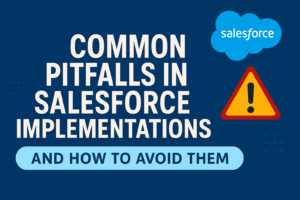BLOG
The Importance of Accessibility in Social Media
Social media has revolutionised the way we connect and communicate, offering a platform where voices can be heard and stories can be shared.
However, not everyone can fully participate in this digital world due to accessibility barriers. Below, we’ll explore why accessibility is crucial in social media and provide practical tips for creating more inclusive content.
Why is accessibility important?
At its core, social media should be a space that is welcoming and inclusive for all. By ensuring that your content is accessible, you are not only making it easier for everyone to engage but also demonstrating your commitment to inclusivity. This can lead to increased community growth, higher engagement, and a stronger reputation as a brand that values diversity.
Tips to Increase Accessibility:
-
- Video Captions/Open Captions: Open captions are a vital tool for making videos accessible to everyone, not just those who are deaf or hard of hearing. With a large portion of social media users watching videos without sound, captions are essential. Many platforms now offer automatic captioning features, making it easy to implement this best practice.
Please note the difference between open and closed captions. Open captions are permanently embedded into the video, whereas closed captions can be toggled on and off by the viewer. For accessibility purposes, closed captions are generally recommended. However, if your brand adheres to a specific design style, open captions may be more suitable.
- Colour Contrast and Choice of Colour: Colour contrast plays a significant role in the readability of your content. It refers to the difference in brightness between foreground and background colours. Avoid using combinations that are hard to read, such as bright text on bright backgrounds or pale text on pale backgrounds. Instead, opt for high-contrast combinations like light text on dark backgrounds or dark text on light backgrounds.
- Alt Text or Image Descriptions: Visual content is a key component of social media, but not everyone can see images. Alt text or image descriptions provide a textual description of images, making them accessible to screen readers. While alt text is limited to 100-250 characters, image descriptions can be more detailed and are typically added at the end of a caption or in the first comment.
- Hashtags: When using hashtags, it’s best practice to place them at the end of the caption and capitalise each word (#SocialGarden #StudentGarden). This formatting not only makes hashtags more accessible to screen readers but also improves readability for all users.
- Emojis: Whilst there’s not denying that emojis can add personality to your social media posts, they should only be used judiciously. Some emojis may not be interpreted correctly by assistive technologies like screen readers, potentially leading to confusion. To ensure accessibility, use emojis sparingly and consider providing a textual description of their meaning if necessary.
Websites that Help you Check/Learn More about Accessibility:
- Guide to Accessible Social Media: A good introduction on how accessible social media platforms are for blind and partially sighted people.
- Colour Contrast Checker: Optimises your content for individuals with colour blindness or low vision impairments.
- Abbreviation Checker: Find out if any abbreviations you are using are actually confusing to readers.
- Alt Text Generator: Google Chrome extension that will generate alt text for you (mind you, you would still definitely want to triple check the copy before publishing)
Content Creators to Follow for More Education on Accessibility:
- Carly Findlay: Carly’s approach to image descriptions sets a high standard for accessibility. Her detailed descriptions not only provide essential information but also showcase best practices for making visual content more inclusive.
- Paige Layle: Paige is a passionate advocate for people with disabilities, particularly those with autism. Through her TikTok videos, she educates her audience on the importance of acceptance and understanding for those who may not “fit in” with societal norms.
- Dylan Alcott: Dylan is breaking down stereotypes surrounding people with disabilities. His achievements and activism challenge perceptions and highlight the abilities and talents of individuals with disabilities.
Incorporating accessibility best practices into your social media content is not just about following guidelines; it’s about fostering a more inclusive online community.
By learning from these content creators and implementing simple strategies like providing captions for videos, ensuring colour contrast, and using alt text for images, you can make a meaningful difference in the accessibility of your content.
What changes will you make today to make your content accessible?













